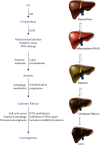Role of Autophagy in Cadmium-Induced Hepatotoxicity and Liver Diseases
- PMID: 34422041
- PMCID: PMC8371627
- DOI: 10.1155/2021/9564297
Role of Autophagy in Cadmium-Induced Hepatotoxicity and Liver Diseases
Abstract
Cadmium (Cd) is a toxic pollutant that is associated with several severe human diseases. Cd can be easily absorbed in significant quantities from air contamination/industrial pollution, cigarette smoke, food, and water and primarily affects the liver, kidney, and lungs. Toxic effects of Cd include hepatotoxicity, nephrotoxicity, pulmonary toxicity, and the development of various human cancers. Cd is also involved in the development and progression of fatty liver diseases and hepatocellular carcinoma. Cd affects liver function via modulation of cell survival/proliferation, differentiation, and apoptosis. Moreover, Cd dysregulates hepatic autophagy, an endogenous catabolic process that detoxifies damaged cell organelles or dysfunctional cytosolic proteins through vacuole-mediated sequestration and lysosomal degradation. In this article, we review recent developments and findings regarding the role of Cd in the modulation of hepatotoxicity, autophagic function, and liver diseases at the molecular level.
Copyright © 2021 Suryakant Niture et al.
Conflict of interest statement
The authors declare that they have no conflicts of interest.
Figures




References
Publication types
Grants and funding
LinkOut - more resources
Full Text Sources

